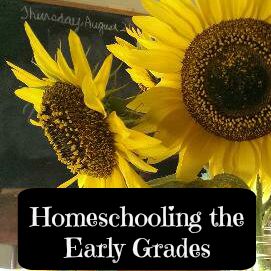“If we taught babies to talk as most skills are taught in school, they would memorize lists of sounds in a predetermined order and practice them alone in a closet.” Linda Darling-Hammond, Stanford Graduate School of Education
In the first few posts of this series, we talked about taking a relaxed approach to homeschooling and focusing on our relationships with our children, and our children’s relationships to the materialthey are learning. Now we’re going to look at the final “R” in the series: real experiences.
I think one of the best things about homeschooling is the ability to take advantage of the learning opportunities that naturally occur in daily life. The kinds of things that are unplanned, but leave an impression on kids because they come from their very own lives and aren’t imposed on them by on an external curriculum. I’ll share a few recent experiences from my own life to illustrate the point.
We’ve been spending a lot of time at parks this summer. We are blessed where we live with an abundance of amazing parks. One of our favorites has a creek with water just deep enough for wading and splashing and catching crawdads (crayfish, crawfish, mud bugs, whatever you like to call them), but not deep enough to have to worry too much about a 2 year old going under.

We’ve been meeting some friends there once a week to let the kids run wild while the mamas chat under a tree. These are some of my favorite times as a mom and as a homeschooler. As I watch the kids run up and down the hills, gather in little groups to chat or play with trucks, and engage in crazy, disgusting antics such as algae fights, my heart feels so content as the phrase “magical childhood” echoes in my mind.
As I watch, I love to see the learning that is going on – completely spontaneously.
Last week, I was amused as my oldest started bringing me random “treasures” he was digging out of the mud – an old hand weight, a hinge, a glass bottle (not a beer bottle oddly enough), an enormous bolt, a metal pipe. I had to chuckle to myself. We’re starting school in a couple of weeks and I have a huge archaeology unit planned. I’m so thankful for this spontaneous archaeological dig my son conducted, because I know it will be way more meaningful to him than anything I plan.
I seized the opportunity to think like an archaeologist. I asked him how he thought those things ended up there. How long might they have been there? What guesses can we make about what’s happened in and around the creek based on the small clues we found? I didn’t force the conversation. I just wondered with him about the really cool stuff he’d found. (And because, at times, I’m a really awesome mom, I let him bring the mud and algae encrusted treasures back home to display on our “nature shelves.”)
As our visit to the park reached the 3 hour mark, the boys started getting, um, daring. They started dropping rocks in the creek. Then they started throwing rocks in the creek. Then they started trying to find the biggest rocks they could lift to drop from the bridge. Then they started speculating. If it were possible for them to lift that largest rock there and drop it from the bridge, would the splash it created empty the creek? There was some discussion (that I couldn’t really follow) that the rock would actually be too big to make a splash because it was taller than the creek was deep. This is real scientific speculation. Kids do this all the time.
Again this morning, we were at a park. This one is walking distance from our home and doesn’t have the great creek feature of the other park. It was a spontaneous trip, and we took the neighbor boy along with us. It was a very hot day after some heavy rains, and so the shady sandbox beckoned. The sand was just wet enough to make some great structures.
The neighbor boy wanted to show us how he and his friends dig tunnels in the sand at school.
I didn’t have my camera with me, but the tunnels were similar to this one:

Ours were a little different, more of a tunnel under ground than through a hill, but you get the general idea.
Anyway, to facilitate a bit of scientific thinking, I wondered aloud, “why doesn’t it collapse?” Now we didn’t necessarily answer that question, but we asked it. And they thought about it. And that’s science. And then they started seeing how close together they could dig the tunnels without them collapsing. And we noticed that they looked like prairie dog holes. And then we remembered the chipmunk colonies we’d seen while camping.
This is a lot of science from two trips to the park. And none of it was premeditated.
When we know what we’re looking for, we can see the learning taking place in the everyday activities of our children. In my next posts, I’ll show you how to see this learning through real experiences for each of the traditional 3 R’s – reading, ‘riting, and ‘rithmetic.
To read the other posts in this series:




